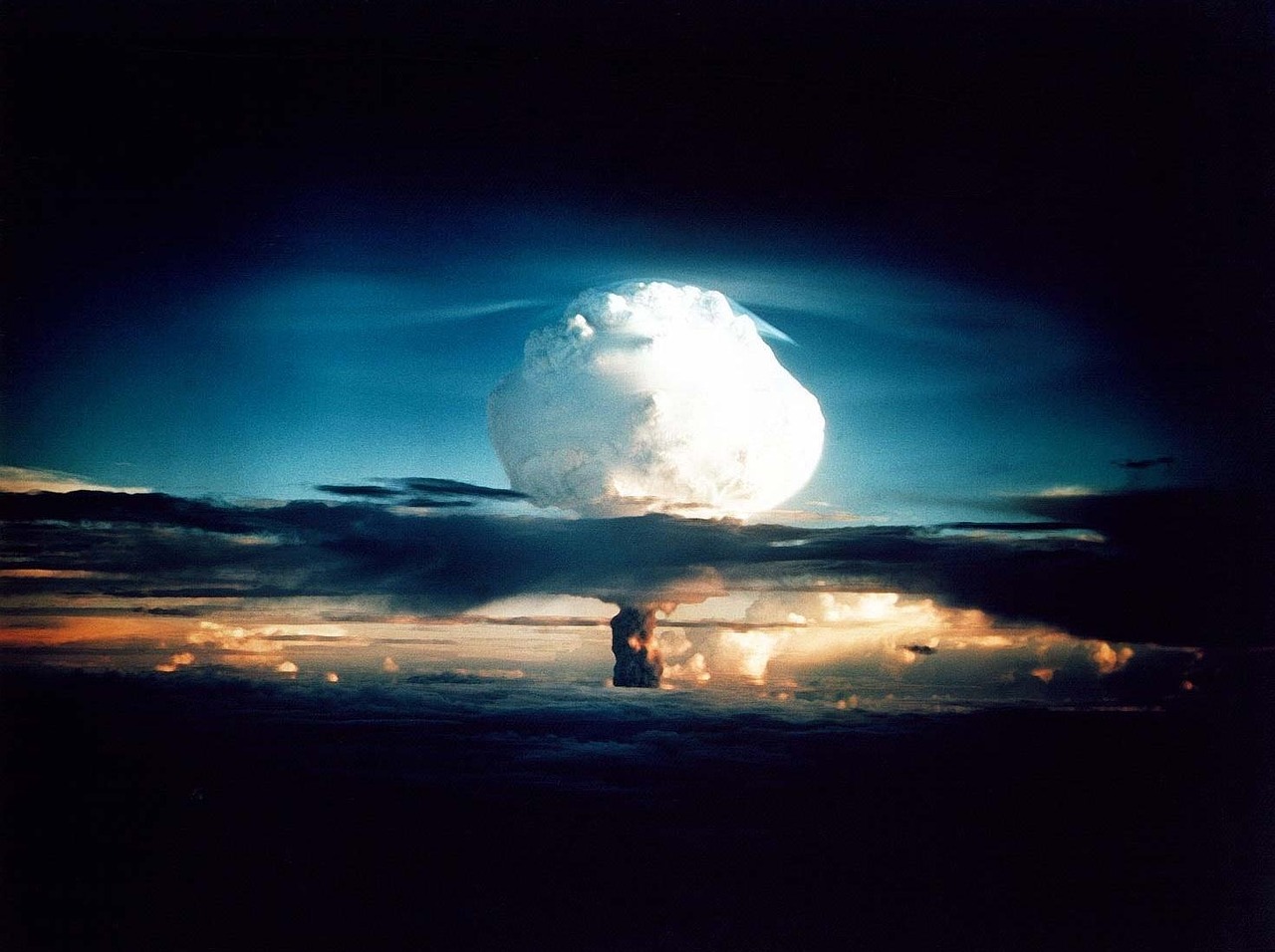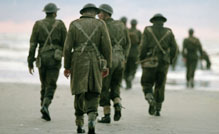On 20 November 1983, an estimated 100 million people sat down to watch the landmark TV movie The Day After , a sobering look at what would happen in the aftermath of a nuclear attack, created in the hopes of influencing policy makers and politicians to 'find means to avert the fateful day'. Centred around the horrifying fall out to ordinary lives when Kansas City is hit with a Russian missile, the film was said to have left even President Reagan shaken.
Luc-André Brunet, Senior Lecturer in History, and Mark Fryers, Lecturer in Film & Media, sat down to discuss the political and social impact of the film to mark the 40th anniversary of its broadcast.
Q: What was the climate of 1983? How did tensions and anxieties reach the boiling point demonstrated in The Day After?
Luc-André: In the years after the 1962 Cuban Missile Crisis there had been a period of détente between the superpowers, but all of this started to break down in the late 1970s culminating with the Soviets invading Afghanistan in December 1979. Against this backdrop, Ronald Reagan took office in 1981, with his strategy of ‘peace through strength’. There were renewed fears that a nuclear war could be triggered – potentially even by accident – and we started to see massive anti-nuclear rallies. In June 1982, one million people gathered in Central Park to oppose the nuclear arms race, in one of the biggest protests in US history. Massive anti-nuclear demonstrations also took place in the UK and elsewhere in Europe in the autumn of 1983, when the film was broadcast.
We are also seeing significant anxieties around climate change today that have a strong resemblance to those around nuclear weapons in the early 1980s. In both cases we have fears of the destruction of humankind and of the planet.Q: Did the fact the film was broadcast on TV, rather than in the cinema, affect its impact?
Mark: The 1970s saw an explosion of what they call the ‘made for TV film’ and by 1983 network TV executives were commissioning more films than Hollywood. A staggering number of people tuned into the broadcast of The Day After; you might have heard that expression ‘water cooler television.’ We don't tend to get these things anymore with the dissipation of the traditional network broadcast.
TV films can also bring uncomfortable topics into the home. When dealing with things like nuclear disaster it perhaps also has an even greater impact, you know, through this familial and domestic setting. It very much was what you’d call 'event television'.
Q: What was the response to the film? How accurate was this response?
Luc-André: I think there is a tendency to think that Reagan was especially influenced by the film, having been a Hollywood actor before turning to politics. In The Reagan Diaries, he wrote that the film was ‘very effective and left me greatly depressed.’ From the autumn of 1983 onwards, he did adopt a much more conciliatory approach towards Moscow, especially after Gorbachev came to power in 1985. However, the film is more of a reflection of the mood of the time; I think it would be an exaggeration to say that it changed the course of the Cold War, but it was certainly one factor among many that encouraged what some historians have called the Reagan Reversal.
Mark: I found that journal entry from Reagan as well, I didn't know that existed. It is interesting to think of his connection to the film industry because he was this President who would frequently reference films. The reception to the film became a bit of a battleground between the political left and right. An interesting summation comes from the New York Times: ‘Champions of the film say it forces us to think intelligently about the arms race; detractors say it preaches appeasement.’
Luc-André: Immediately after the broadcast on the same channel there was a televised panel discussion of invited experts. Really high-level people like Henry Kissinger, Robert McNamara and Carl Sagan were brought in to analyse the film. That's unthinkable now, to have a TV film and then have people of this stature coming in and discussing the policy ramifications of it, so I think again that just further reflects how seriously this was taken by the viewers at the time.
Watch a discussion between Luc-André and Mark on the 'film star president himself', Ronald Reagan.
Q: How does the impact of the film, and the events of 1983, parallel world events in 2023?
Luc-André: There is a continued nuclear threat, particularly in the wake of Putin and Trump withdrawing their countries from landmark arms control agreements. Many of the safeguards that were put in place in response to these anxieties of 1983 are in the process of being dismantled. But we are also seeing significant anxieties around climate change today that have a strong resemblance to those around nuclear weapons in the early 1980s. In both cases we have fears of the destruction of humankind and of the planet, which is really mobilising millions of citizens to act. Citizens who aren't necessarily normally very politically engaged – over this issue, they are mobilised.
Mark: Indeed, the threat of apocalypse has perhaps shifted to environmentalism. The Day After Tomorrow (2004) which has a reference in the title there to The Day After, focuses on what happens in the aftermath of an environmental catastrophe. Interestingly it's very often portrayed through a tidal wave, there's a number of films in which catastrophe comes from the oceans. But I think it's quite possible that we will see a return to maybe some of these narratives that consider that nuclear destruction isn't just something from a particular time period; it isn't just something that's been forgotten.
The trailer for The Day After is available to watch below:
.
You can watch the full version of the film here .







Rate and Review
Rate this article
Review this article
Log into OpenLearn to leave reviews and join in the conversation.
Article reviews